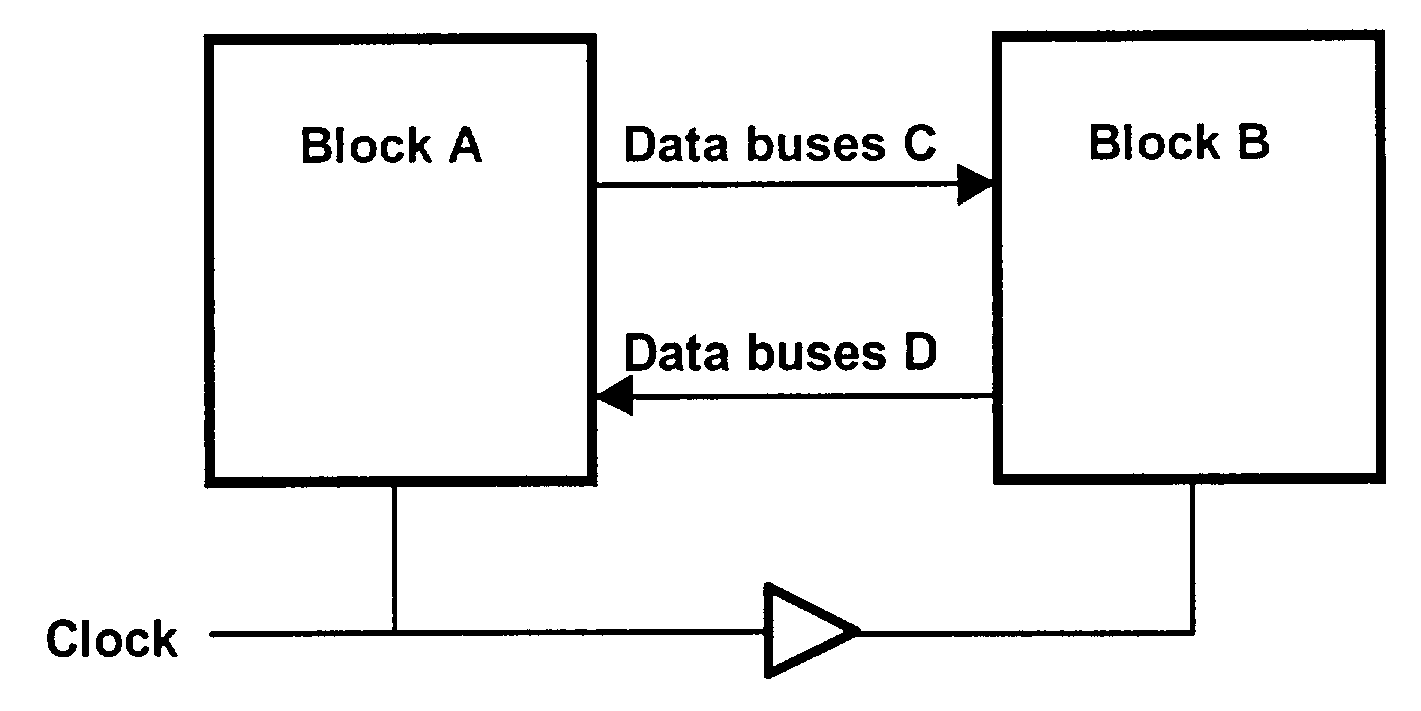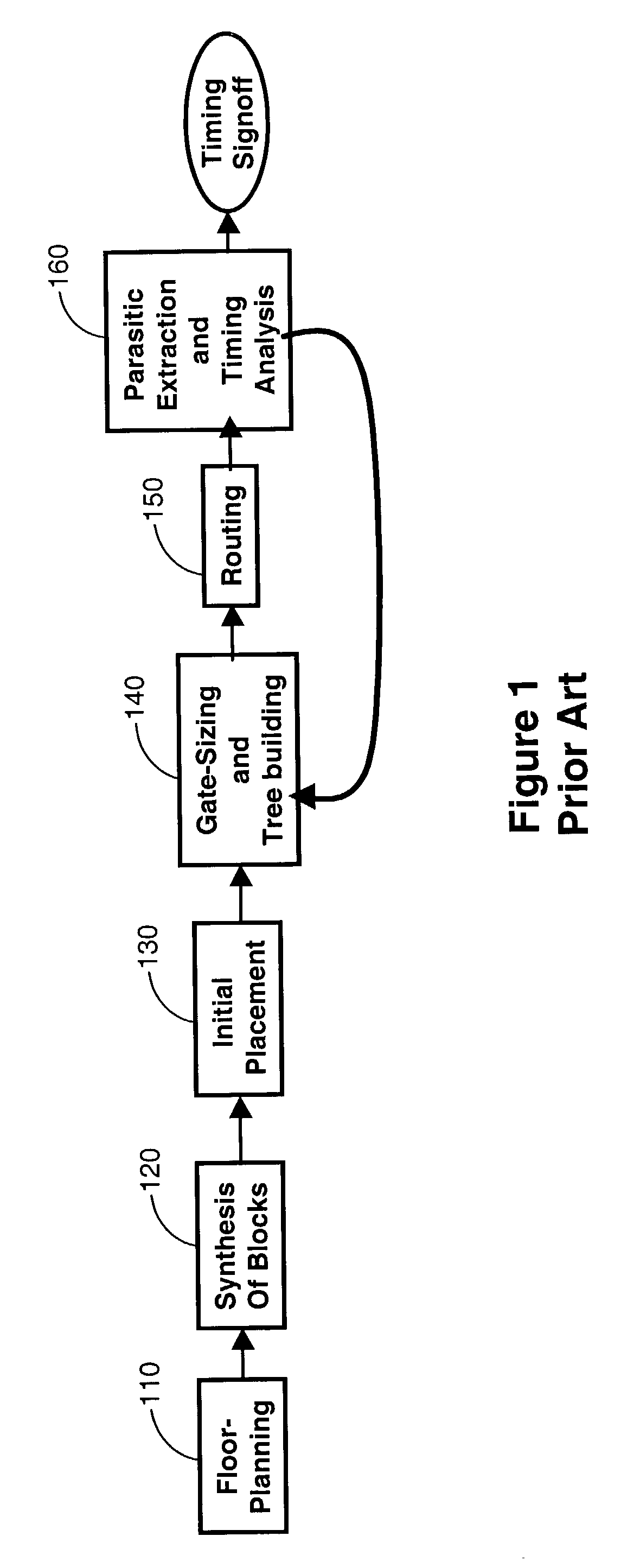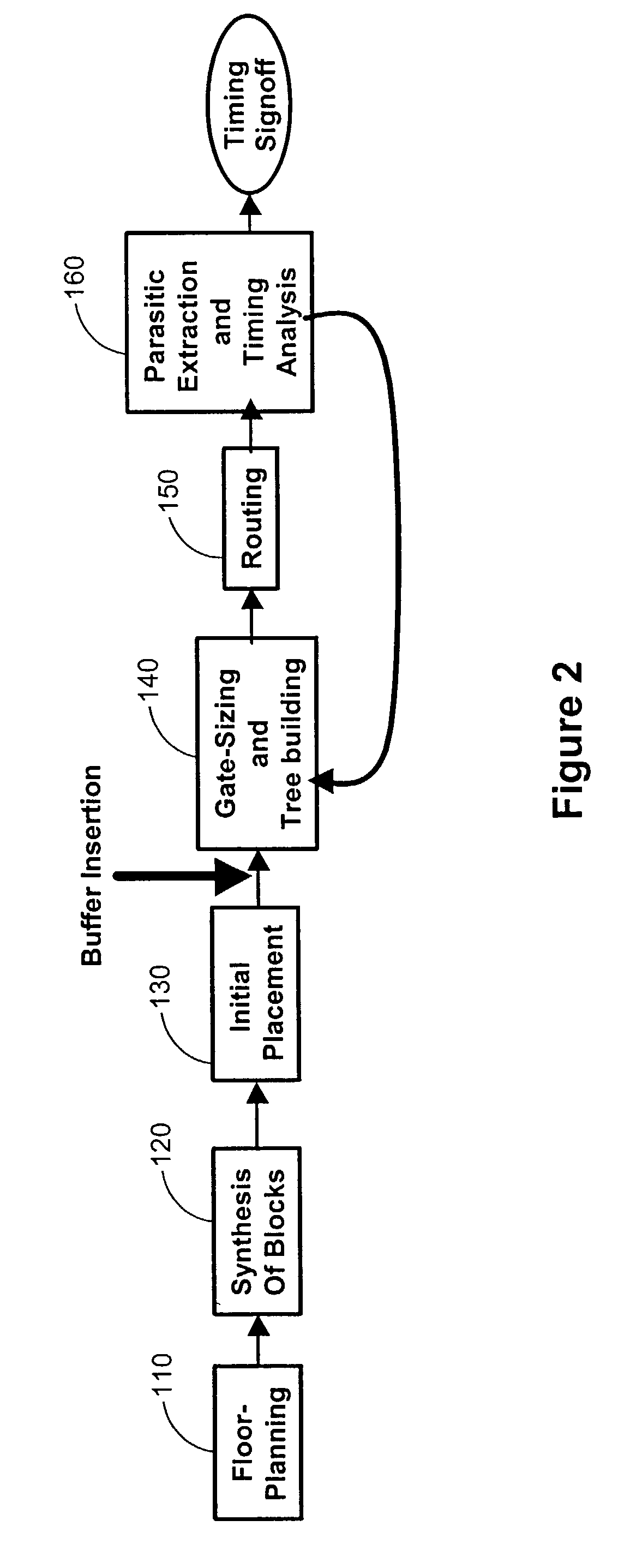Integrated circuit chip design
a technology of integrated circuits and chips, applied in the direction of cad circuit design, program control, instruments, etc., can solve the problems of huge project risk in dependent upon any job, no good way to benefit from parallel work, and loss of hierarchy
- Summary
- Abstract
- Description
- Claims
- Application Information
AI Technical Summary
Benefits of technology
Problems solved by technology
Method used
Image
Examples
Embodiment Construction
[0039]FIG. 1 depicts the steps conventionally followed in layout of an IC. These steps include floorplanning 110, block synthesis 120, initial placement of blocks 130, gate sizing and clock tree building 140, routing 150, and parasitic extraction and timing analysis 160.
[0040]Timing analysis is ordinarily performed at the end of the process because of a perceived need to complete the design of both the parent and child elements of a hierarchical design before completing the timing analysis. For example, the parent element does not see the load (fan out) of the wires in the child block and connections between the parent element and the output of the child block can change the internal timing of the child block.
[0041]Timing analysis often reveals timing problems and the solution to these problems may often be to insert buffers into the inputs or outputs of various blocks. Such insertion of buffers typically requires rerouting of wires and further timing analysis due to wire congestion...
PUM
 Login to View More
Login to View More Abstract
Description
Claims
Application Information
 Login to View More
Login to View More - R&D
- Intellectual Property
- Life Sciences
- Materials
- Tech Scout
- Unparalleled Data Quality
- Higher Quality Content
- 60% Fewer Hallucinations
Browse by: Latest US Patents, China's latest patents, Technical Efficacy Thesaurus, Application Domain, Technology Topic, Popular Technical Reports.
© 2025 PatSnap. All rights reserved.Legal|Privacy policy|Modern Slavery Act Transparency Statement|Sitemap|About US| Contact US: help@patsnap.com



